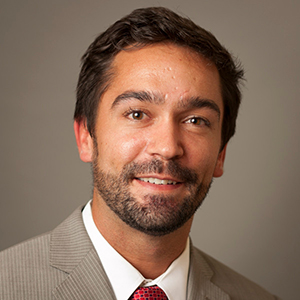Socially Responsible Investing Goes Mainstream

by Thomas Bishop, MBA ’16 and Environmental Finance & Impact Investing Fellow

The Sustainable Global Enterprise (SGE) Immersion and its career trek to Washington, DC were instrumental in making a career transition to social impact and finance and landing an internship with Calvert.
I had the opportunity to intern with CalvertInvestments, a socially responsible investment firm last summer. I chose topursue an MBA at Johnson to study innovative ways to finance social impact so Itook the Sustainable Global Enterprise (SGE) Immersion. Through this program wewent on a career trek to Washington, DC which was instrumental in connecting meto companies within my field of interest. (We visited Calvert Investments,Calvert Foundation, and Microvest).
I spent the summer with Calvert as a Sustainability Research Intern, writing research briefs on a variety of pressing issues incorporate social responsibility and their impact on investment decisions. (See a piece on employee engagement here on Calvert’s website). It was an excellent introduction to the quickly growingfield of socially responsible investing.
The industry has evolved from the avoidance of “sinstocks,” such as alcohol or firearms companies, to a more complex methodologyof rating companies on environmental, social, and governance (“ESG”) factors,and excluding the poorly rated companies from investment funds. Sociallyresponsible investing has resulted in social movements such as divestment fromSouth African companies to pressure an end to apartheid policies, and morerecently divestment from fossil fuels to combat climate change.
In practice, there are a variety of strategies thatsocially responsible investment firms offer, and Calvert is on the leading edgewith its comprehensive rating system based on ESG factors that are specificallyrelevant to each industry and company that it analyzes. For example, humanrights issues in supply chains would be critical to an electronics company thatuses earth minerals in its products, whereas appropriate governance structuresand compensation practices are essential to the banking industry. These factorsnot only promote social impact, but are crucial to a financially soundbusiness. In this sense, socially responsible investing can also be seen as aneffective way to manage risk in an investment portfolio, rather than purely foraltruistic purposes.
As our generation of millennials become the nexttarget market for financial institutions, social impact investing will soon begoing mainstream. Goldman Sachs’ recent purchase of Imprint Capital, a leadingboutique impact investment firm, is a prime example. It is crucial thatinvestors are informed as to how an institution determines what qualifies as animpact investment, so that the “impact” aspect isn’t lost in the race to meetrapidly growing consumer demand.
The internship allowed me to see how sociallyresponsible investing works in practice, and it also gave me the freedom toresearch and write on topics that were of particular interest to me. I was alsoable to contribute to a series of research papers on the evolving role ofcorporations in society (see here) that Calvert is publishing with Harvard professor George Serafeim. Much of theresearch that was covered in the SGE Immersion “boot camp” was echoed in theseries, and having a strong background in the area allowed me to add value toan important piece of work for Calvert. The internship also allowed me manyopportunities to network with others in the social impact investing space and attendevents on Capitol Hill. Not to mention that happy hour in DC in the summer istough to beat.
In terms of making a career transition to socialimpact and finance, my internship at Calvert was a valuable first step in thatdirection. The SGE career trek allowed me to make this connection, and the Immersionexpanded my research and writing skillset, as well as knowledge ofsustainability in business, so that I was able to make a meaningfulcontribution to Calvert’s work.
